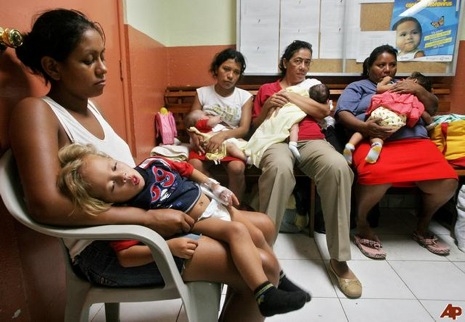
A website with the odd name of “Neon Tommy” is not exactly where you’d expect to find good solid reporting, and even, gasp, investigative journalism, but that’s because it’s not obvious with a URL like that that the site is the digital domain of the prestigious Annenberg School for Communication at USC.
One story in particular, The Real Reason Behind California’s H1N1 Racial Disparity by senior editor Olga Khazan, caught our eye this morning. Noting the recent California Department of Public Health findings that blacks and Latinos are much more likely to be hospitalized and die from H1N1 than whites, Khazan takes issue with state epidemiologist Dr. Gilberto Chavez’s vaguely worded statement that blacks and Hispanics suffer higher rates of chronic ailments because “for cultural reasons, they may be waiting too long to seek care.”
Huh? You mean “cultural reasons” like no access to quality healthcare?
“[...] while “cultural reasons” cannot fully explain why H1N1 kills people of some races more than others, socio-economic ones can. In any case, there’s no culture-based reluctance to protect against H1N1, according to Al Hernandez-Santana, executive director of the Latino Coalition for a Healthy California, a Sacramento advocacy group.
‘The conclusions by the chief epidemiologist are flawed,’ he said in an e-mail interview. ‘There are no significant differences in cultural attitudes towards vaccination that we have seen. If anything, flu shots, polio vaccines and others have a long history of acceptance in Latino communities.’
When controlling for insurance coverage, Latinos get seasonal flu shots at rates comparable to whites, according to data from the 2005 and 2007 California Health Interview Survey, and insured Latinos are vaccinated at slightly higher rates than insured whites.
Furthermore adult African-Americans have a higher rate of vaccinations, nationwide, than whites. The “cultural reasons” Gilberto Chavez speaks of, can be, once you look behind the statistics just a little bit, better understood like so: the uninsured poor often have chronic diseases that they can ill afford to treat, so when H1N1 hits them, it hits them much harder than it would hit healthy folk, you know, the kind who can actually afford health insurance. The article further reports:
‘If someone is sick to start off with, and they have an underlying condition, if you add flu on top of that, it’s a tipping point,’ said Elizabeth Bancroft, a medical epidemiologist at the L.A. County Department of Public Health.
And behind those underlying conditions lies the root cause for the health department’s startling figures, and it has little to do with culture. In California, chronic diseases tend to afflict minorities more severely than whites with the same conditions, because in California, Latinos, blacks and Asians are all uninsured at much higher rates than whites.
For those without health insurance, minor problems left untreated can grow into chronic conditions and debilitating diseases. It’s important for people with underlying health issues like asthma, diabetes, obesity and kidney disease to get vaccinated before these conditions, coupled with the H1N1 virus, kill them.
Cross posting from Brand X